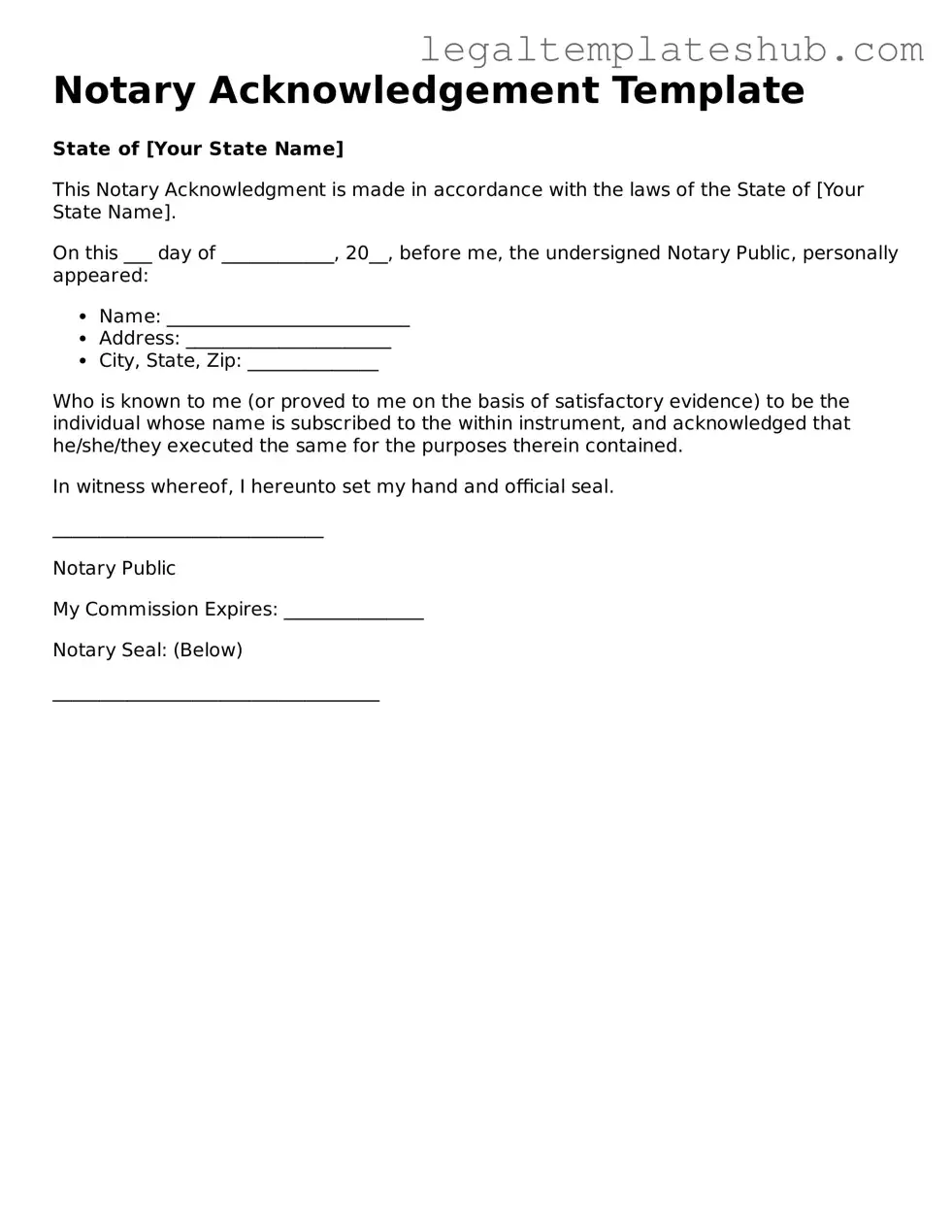Printable Notary Acknowledgement Template
The Notary Acknowledgement form is a legal document used to verify the identity of a signer and confirm that they signed a document willingly. This form serves as a crucial step in many legal processes, ensuring that signatures are authentic and binding. For those looking to complete this form, click the button below to get started.
Access Editor
